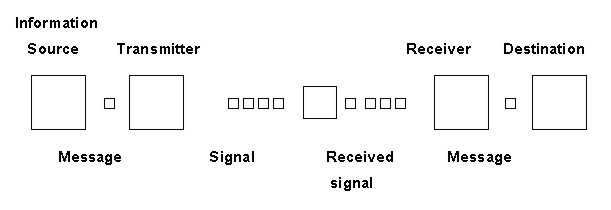| |
Writing
a scintific article is one of the major and final products of
all scientists. Science is not a private thing. Scientific work
is doing its job only when it is published, when belongs to other
people. The highest value is reached when scientific information,
as published material, become a part of the world fund of knowledge.
Keeping scientific "results" unpublished indicate two possibilities:
research is not finished or is finished but unsuccesfully. If
you do not publish the results of scientific research it is the
same as you did not work at all.
WHY TO PUBLISH?
There are many reasons why it is necessary to publish the results
of scientific research. The most important ones are consequence
of the fact that the publication is an integral part of the scientific
method of research. Scientific method is the best thing thought
out up to now to get new and true knowledge or information. Researchers
using scientific method, in short, begin by formulation of hypothesis
and its verification in practice (experiment). The final phase
of all scientific processess is publication of the obtained results
in the form of scientific information (1, 2). Values of this information
can be established only when they are published.
Teaching about truth. The aim of science is truth. New
information (knowledge) obtained by a scientific method is objectively
true. One of the criteria of the objectivity of the scientific
results is their intersubjective reproducibility. Namely, any
scientist or competent person, if hypothesis and condition of
its verification are clearly defined should, in repeated experiment,
obtain nearly identical results. But to check this, scientific
results must be published.
Scientific information as a resource. Today, any society
can be viewed as economicaly rich, military powerful, cultural
progressive and so on depending of how much available information
possesses. Beside matter end energy, information is third entity
for existence of life. But, contrary to matter and energy, information
during communication elicit special quality: by use its value
do not decline, by distribution its value do not decrese. On the
contrary, its value in the process of communication increase.
Ethical character of scientific information. Science does
not know for frontiers between states and differences in social,
religious, race, sex and economic status, differences between
groups and individuals. Scientists publish their results in international
journals making them available to all interested in. In this way
science has the widest ethical character, greater than a simple
moral code based by political or religious bodies. The nature
of the scientific work Faraday expressed in a sentence: To work,
to finish, to publish.
HOW TO PUBLISH?
It is not only enough to publish a scientific article. Writing
is communicating. The main purpos of the scientific writing is
to transfer ideas and information to other people. Or better to
say, to transfer information to the person who needs them. This
is best done through an original scientific article published
in scientific journals. The job of the scientific article is to
communicate information.
Definition. Scientific communication represents the whole
process of publication, transfer and reception of scientific information.
This is the basic mechanism of existence and developement of science.
Transfer of information. If information is published but
not transferred to person who needs them it is as a half bridge
is built - information is published but fails to communicate.
The model of communication (diagram) represent the way in which
information is transferred to other people.
 |
In
this system, like other systems (radio, language-lecture), information
is encoded, transmitted, received, decoded and stored. In written
communication the message is transferred from facts to language,
from language to written words, from written words to language
in another mind, and out of that language into stored information
(3).
Feedback. The response of other persons (feedback) to
our information is very important in scientific communication.
In communication in language, for example, person who is listening
to lecturer or in everyday conversation gives feedback by nod,
smile, saying "yes" or "no" and so on. This indicates that communication,
and not only transmission, is taking place. In written communication,
feedback is less obvious. But written response of the editor,
when the manuscript is sent back, response of the head of the
department or data about citation of our article could be clear
indicator for effective communication.
EFFECTIVE COMMUNICATION
First principle: To define aim of writing and to know who
the readers are. As we already said, if information is to be communicated
effectively, it must be more than only scientifically accurate
and grammatically correct. Effective communication is a transfer
of information to other people, or to person who is interested
in. Two questions are of the primary importance here and must
be clearly defined. First, what is the aim (purpose, task) of
writing? It may be: to describe, to explane, to instruct, to teach
a method and so on. Each aim will begin with different information!
Second, who are the readers? Are they the same as we are? Are
they alike or are they a mixed group? What do they already know
about the topic? What do they need to know and so on. The presentation
of scientific information must be in terms that they will understand.
Sufficient information and basic structure of article
(4). Scientific article is a document which contains sufficient
information to enable readers to: critically assess information
and to repeat the experiment. The basic structure of such a scientific
article is given by the acronym IMRAD, which stands for
Introduction (What question was asked?)
Methods (How was it studied?)
Results (What was found?)
And
Discussion (What do the findings mean?)
Selection and arrangement of information. Whenever we have
something important to say, e.g. at least one new and important
information we should publish it. Very important for efficient
communication is the selection of really relevant information
from the obtained available material. Selection must be made in
favour of the needs and interests of the reader. Selected information
must be arranged. The most attractive scientific article is when
new information is arranged in order of importance from the readers'
point of view. The best organization is in a pyramide structure:
at the top of pyramide are title and new information in short
(abstract) and at the base are methods with most detailed information.
This arrangement enables the majority of readers to get a quick,
clear version of the essence of new information and the story
that is to come. Today, nobody will show interest and read published
material which is not selected and arranged in order of importance.
As in fundamental or basic science, effective communication is
very important in clinical medicine. Writing and publishing is
an obligation of every modern medical doctor. For those who read
scientific and professional journals, who systematically and prospectively
organize his or her everyday professional work or investigation,
publication of obtained results will not be difficult at all.
So it would be easier to evaluate the values of every single doctor,
group or institution.
REFERENCES
1. Savić J. Kako stvoriti naučno delo u
biomedicini. St. Pazova: Savpo 1999.
2. Savić J. Kako napisati, objaviti i vrednovati naučno delo u
biomedicini.
3. izd. St. Pazova: Savpo 2001. 3. Turk C, Kirkman J. Effective
writing. London: E & FN Spon 1995.
4. Hall MG. How to write a paper. London: BMJ Publishing group
1995.
|
|

